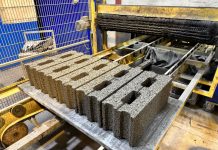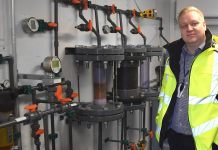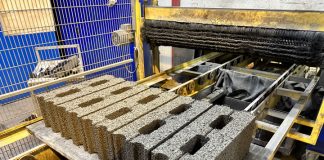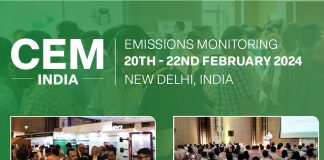High frequency monitoring needed to protect UK rivers!
The science behind nutrient pollution in rivers is still poorly understood despite the fact that nitrate and phosphate concentrations in the UK’s rivers are mostly unacceptable, although an element of uncertainty exists about what an acceptable level actually is. Key to improving our understanding of the sources and impacts of nutrient pollution is high-resolution monitoring across a broad spectrum of river types. In the following article, Nigel Grimsley from OTT Hydrometry will describe relatively new technologies that have overcome traditional barriers to the continuous monitoring of phosphate and nitrate.
Background
Phosphates and nitrates occur naturally in the environment, and are essential nutrients that support the growth of aquatic organisms. However, water resources are under constant pressure from both point and diffuse sources of nutrients. Under certain conditions, such as warm, sunny weather and slow moving water, elevated nutrient concentrations can promote the growth of nuisance phytoplankton causing algal blooms (eutrophication). These blooms can dramatically affect aquatic ecology in a number of ways. High densities of algal biomass within the water column, or, in extreme cases, blankets of algae on the water surface, prevent light from reaching submerged plants. Also, some algae, and the bacteria that feed on decaying algae, produce toxins. In combination, these two effects can lower dissolved oxygen levels and potentially kill fish and other organisms. In consequence, aquatic ecology is damaged and the water becomes unsuitable for human recreation and more expensive to treat for drinking purposes.
In its State of the Environment report, February 2018, the Environment Agency said: “Unacceptable levels of phosphorus in over half of English rivers, usually due to sewage effluent and pollution from farm land, chokes wildlife as algal blooms use up their oxygen. Groundwater quality is currently deteriorating. This vital source of drinking water is often heavily polluted with nitrates, mainly from agriculture.”
Good ecological status
The EU Water Framework Directive (WFD) requires the UK to achieve ‘good status’ of all water bodies (including rivers, streams, lakes, estuaries, coastal waters and groundwater) by 2015. However, only 36% of water bodies were classified as ‘good’ or better in 2012. In the UK, nutrient water quality standards are set by DEFRA, so for example, phosphorus water quality standards have been set, and vary according to the alkalinity and height above mean sea level of the river. Interestingly, the standards were initially set in 2009, but in 75% of rivers with clear ecological impacts of nutrient enrichment, the existing standards produced phosphorus classifications of good or even high status, so the phosphorus standards were lowered.
Highlighting the need for better understanding of the relationships between nutrients and ecological status, Dr Mike Bowes from the Centre for Ecology & Hydrology has published research, with others, in which the effects of varying soluble reactive phosphate (SRP) concentrations on periphyton growth rate (mixture of algae and microbes that typically cover submerged surfaces) were determined in 9 different rivers from around the UK. In all of these experiments, significantly increasing SRP concentrations in the river water for sustained periods (usually c. 9 days) did not increase periphyton growth rate or biomass. This indicates that in most UK rivers, phosphorus concentrations are in excess, and therefore the process of eutrophication (typified by excessive algal blooms and loss of macrophytes – aquatic plants) is not necessarily caused by intermittent increases in SRP.
Clearly, more research is necessary to more fully understand the effects of nutrient enrichment, and the causes of algal blooms.
Upstream challenge
Headwater streams represent more than 70% of the streams and rivers in Britain, however, because of their number, location and the lack of regulatory requirement for continuous monitoring, headwater streams are rarely monitored for nutrient status. Traditional monitoring of upland streams has relied on either manual sampling or the collection of samples from automatic samplers. Nevertheless, research has shown that upland streams are less impaired by nutrient pollution than lowland rivers, but because of their size and limited dilution capacity they are more susceptible to nutrient impairment.
Monitoring technology
Sampling for laboratory analysis can be a costly and time-consuming activity, particularly at upland streams in remote locations with difficult access. In addition, spot sampling reveals nutrient levels at a specific moment in time, and therefore risks missing concentration spikes. Continuous monitoring is therefore generally preferred, but in the past this has been difficult to achieve with the technology available because of its requirement for frequent re-calibration and mains power.
High resolution SRP monitoring has been made possible in almost any location with the launch by OTT Hydromet of the the ‘HydroCycle PO4’ which is a battery-powered wet chemistry analyser for the continuous analysis of SRP. Typically, the HydroCycle PO4 is deployed into the river for monitoring purposes, but recent work by the Environment Agency has deployed it in a flow-through chamber for measuring extracted water.
The HydroCycle PO4 methodology is based on US EPA standard methods, employing pre-mixed, colour coded cartridges for simple reagent replacement in the field. Weighing less than 8kg fully loaded with reagents, it is quick and easy to deploy, even in remote locations. The instrument has an internal data logger with 1 GB capacity, and in combination with telemetry, it provides operators with near real-time access to monitoring data for SRP.
The quality of the instrument’s data is underpinned by QA/QC processing in conjunction with an on-board NIST standard, delivering scientifically defensible results. Engineered to take measurements at high oxygen saturation, and with a large surface area filter for enhanced performance during sediment events, the instrument employs advanced fluidics, that are resistant to the bubbles that can plague wet chemistry sensors.
Environment Agency application
The National Laboratory Service Instrumentation team (NLSI) provides support to all high resolution water quality monitoring activities undertaken across the Agency, underpinning the EA’s statutory responsibilities such as the WFD, the Urban Waste Water Directive and Statutory Surface Water Monitoring Programmes. It also makes a significant contribution to partnership projects such as Demonstration Test Catchments and Catchments Sensitive Farming. Technical Lead Matt Loewenthal says: “We provide the Agency and commercial clients with monitoring systems and associated equipment to meet their precise needs. This includes, of course, nutrient monitoring, which is a major interest for everyone involved with water resources.”
Matt’s team has developed water quality monitoring systems that deliver high resolution remote monitoring with equipment that is quick and easy to deploy. There are two main options. The ‘green box’ is a fully instrumented cabinet that can be installed adjacent to a water resource, drawing water and passing it to a flow-through container with sensors for parameters such as Temperature Dissolved Oxygen, Ammonium, Turbidity, Conductivity pH and Chlorophyll a. Each system is fitted with telemetry so that real-time data is made instantly available to users on the cloud.
Conscious of the need to better understand the role of P in rivers, Matt’s team has integrated a HydroCycle PO4 into its monitoring systems as a development project.
Matt says: “It’s currently the only system that can be integrated with all of our remote monitoring systems. Because it’s portable, and runs on 12 volts, it has been relatively easy to integrate into our modular monitoring and telemetry systems.
“The HydroCycle PO4 measures SRP so if we need to monitor other forms of P, we will use an auto sampler or deploy a mains-powered monitor. However, monitoring SRP is important because this is the form of P that is most readily available to algae and plants.”
Explaining the advantages of high resolution P monitoring, Matt refers to a deployment on the River Dore. “The data shows background levels of 300 µg P/l, rising to 600 µg P/l following heavy rain, indicating high levels of P in run-off.
Nitrate
Similar to phosphates, excessive nitrate levels can have a significant impact on water quality. In addition, nitrates are highly mobile and can contaminate groundwater, with serious consequences for wells and drinking water treatment. Nitrate concentrations are therefore of major interest to the EA, but traditional monitoring technology has proved inadequate for long-term monitoring because of a frequent recalibration requirement. To address this need, which exists globally, OTT Hydromet developed the SUNA V2, which is an optical nitrate sensor, providing high levels of accuracy and precision in both freshwater and seawater.
The NLSI has evaluated the SUNA V2 in well water and Matt says: “It performed well – we took grab samples for laboratory analysis and the SUNA data matched the lab data perfectly. We are therefore excited about the opportunity this presents to measure nitrate continuously, because this will inform our understanding of nitrate pollution and its sources, as well as the relationship between groundwater and surface water.”
Summary
The new capability for high-resolution monitoring of nutrients such as phosphorus will enable improved understanding of its effects on ecological status, and in turn will inform decisions on what acceptable P concentrations will be for individual rivers. This is vitally important because the cost of removing P from wastewater can be high, so the requirements and discharge limits that are placed on industrial and wastewater companies need to be science based and supported by reliable data. Similarly, nitrate pollution from fertilizer runoff, industrial activities and wastewater discharge, has been difficult to monitor effectively in the past because of the technology limitations. So, as improved monitoring equipment is developed, it will be possible to better understand the sources and effects, and thereby implement effective prevention and mitigation strategies.
ENDS
Words: 1,561
For further information, please contact:
OTT Hydrometry Ltd
Unit 19 Jessops Riverside
800 Brightside Lane
Sheffield S9 2RX
Tel. 01246 573480
Fax. 01246 813873
Email: uksales@otthydromet.com
Web site: www.otthydromet.com
Note to editors:
OTT Hydrometry manufactures products that enable water professionals to monitor the planet’s most precious resource. Through the delivery of accurate reliable data, OTT’s instruments and services provide essential tools to help protect the environment.
From precipitation through surface and ground water to marine monitoring applications, OTT’s measurement and communication technologies provide a complete picture of the water cycle. Adcon Telemetry was acquired in 2011, and Sutron and Lufft joined the OTT Hydromet Group in 2015, which means that the company is able to offer the best sensors and data handling technology for every application.
Completely focused on hydro-meteorology and water quality, OTT products have been market leaders for over 140 years and coupled with modern communications technology provide remote access to continuous monitoring data.
Further information is available at www.ott.com/en-uk/







